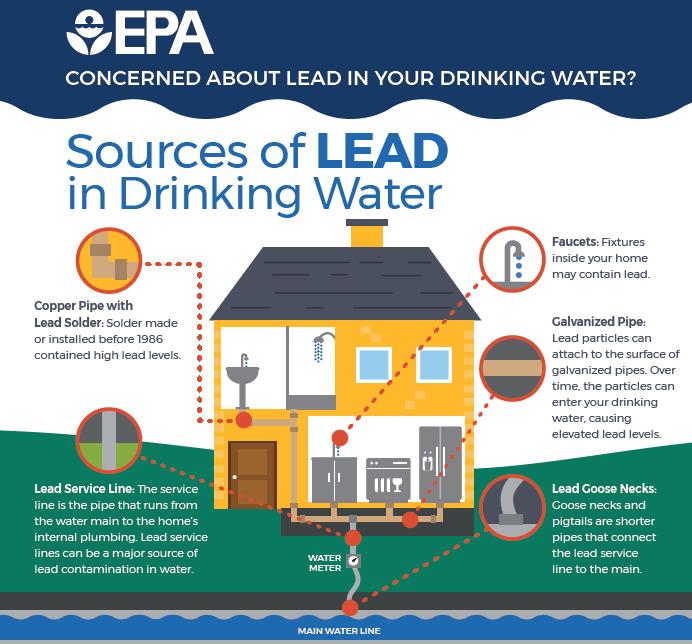Water is not the most common source of lead poisoning
Water quality issues in Flint, Michigan, have heightened concerns nationwide about children’s exposure to lead, especially in schools.
Experts say lead in drinking water is not a common source of lead poisoning, however. Of greater concern, Kitsap County health officials say, is exposure to lead-based paint in older homes and through a parent’s occupation or hobby, among other sources.
Science has documented there is no safe level of lead in children. Children 6 and younger have the highest risk because of their physiology and their tendency to put things in their mouths.
Fortunately, parents can take common-sense steps to limit their children’s exposure to lead. Step one is assessing potential sources in their home and work environments.
“We want parents to be very aware of lead sources because we don’t want young children to be exposed,” said Dr. Susan Turner, health officer for the Kitsap Public Health District.
MORE:Districts release recent lead test results
Lead levels in blood peak at about 18 months of age. Most health providers follow recommendations to do a risk assessment at 12 months and 24 months. Parents are asked about their work and home environments, and if there is an elevated risk, follow-up blood testing may be recommended. Parents can request screening and a blood test if they are concerned, Turner said.
The Washington State Department of Health lists common sources of lead poisoning and ways to minimize your child’s risk.
Lead-based paint
Lead-based paint and lead-contaminated household dust are the most common sources of lead poisoning, according to the DOH. Paint containing lead was banned in 1978. Homes built before 1978 are likely to have lead-based paint, which can chip, peel or flake. Sanding, scraping or tearing painted surfaces can release lead particles, which can be found in household dust of older homes. Painted areas where friction occurs, such as doors, windows and drawers, can also contain lead-contaminated dust. If you live in an older home:

Children’s toys and toy jewelry
U.S. regulations on lead in children’s toys and toy jewelry were tightened in 2008, following high numbers of recalls.
“Manufacturers and importers have gotten the message, and they know it’s not acceptable to put lead in children’s products,” said Patty Davis, press secretary for the Consumer Protection Safety Commission. “If we do find one in the marketplace, we’ll recall it.”
Older toys, secondhand store finds and hand-me-downs are a potential source of lead contamination.
Imported toys are subject to strict U.S. safety standards, and the CPSC works with ports to stop dangerous toys from entering the United States. In 2017, more than 745,000 toys were seized at ports for violating toys standards. Nearly 360,000 toys with lead were seized.
“If we see them coming in, we’re stopping them,” Davis said.
Antiques and heirloom toys are exempted from toy safety regulations but are also a concern, Davis said. “We advise people to keep antique toys, collectible toys away from kids. Put them on the shelf and admire them from there.”
Drinking water
Lead in drinking water is not a common source of lead poisoning. It usually comes from distribution lines or household plumbing rather than lakes, wells or streams. Elevated levels of lead may be present in the water if there are lead pipes, brass fixtures or lead connectors in your home or community water system, or if lead solder was used on your home water pipes. Water testing can be performed by certified labs listed through the Department of Health, https://www.doh.wa.gov/.
MORE:Tests reveal lead in drinking water at Crownhill Elementary
Lead-glazed ceramics, pottery and leaded crystal
Ceramic dishes and pottery that are imported, old, handmade or poorly glazed are at risk for containing lead. Lead may also be found in leaded crystal, pewter and brass dishware.
Acidic food or drinks (containing oranges, tomatoes, other acidic fruit, wine or vinegar) may cause lead to be drawn out of the glaze, which can contaminate food or beverages. You can’t always tell by looking whether a dish contains lead.
Home remedies, imported cosmetics and candy
Some home remedies may contain up to 100 percent lead, which presents a high health risk to children. Arzacon and Greta (both fine orange powders known by other names) may be used in the Hispanic community for indigestion or stomach upset. Paylooah, a red or orange power, may be given to children in the Vietnamese or Hmong communities for a rash or fever. Ghsard, Bali Goli and Kandu are products that may be used for stomachaches in Asian Indian communities.
Certain cosmetics — especially those from the Middle East, India and Asia — may contain high levels of lead. They are Kohl, Kajal, Surma and Sindoor.
Certain candies from Mexico containing tamarind or chili power may be a source of lead exposure. Lead can get into candy when processes such as drying, storing or grinding the ingredients are done improperly.
Mini-blinds
Mini-blinds that are older or imported may contain lead.








